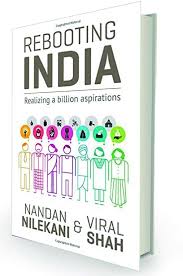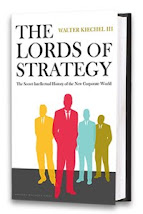The Butterfly Defect: How Globalization
Creates Systemic Risks and What to do About it.
Princeton University Press, 2014
pp.296. Price not
specified.
The Butterfly Defect is a long book to make a short point. We live in a
large interconnected world, and the interconnection brings to the fore its own
risks. These risks are not to be wished away, the interconnection makes it more
and more difficult to isolate and insulate problems. In the interconnected
world the physical borders do not matter and an event in one corner of the
world can affect some other part of the world really fast. Therefore, we are
indeed living in a risky world. This world has its efficiencies, economies of
scale, a certain subversive tendency, but the downside is also enormous.
 The authors choose multiple sectors to illustrate this point after laying
down the basic argument in the first chapter. The first chapter shows the
linkages, the interconnectedness and describes the nature of risks. The second
chapter picks something that we continue to experience – the effect of events
in the financial sector and how it affected the world at large. It is not just
about United States, but also looking at events in Iceland and later in Greece.
The ripples are still being felt elsewhere in the world, where our own Governor
of the Reserve Bank talks about US taper as he goes about announcing the credit
policy.
The authors choose multiple sectors to illustrate this point after laying
down the basic argument in the first chapter. The first chapter shows the
linkages, the interconnectedness and describes the nature of risks. The second
chapter picks something that we continue to experience – the effect of events
in the financial sector and how it affected the world at large. It is not just
about United States, but also looking at events in Iceland and later in Greece.
The ripples are still being felt elsewhere in the world, where our own Governor
of the Reserve Bank talks about US taper as he goes about announcing the credit
policy.
In addition to the financial sector, one other sector that sharply
illustrates the risk of interconnectedness is the health sector. A few years
ago, we experienced a global scare over Severe Accute Respiratory Syndrome
(SARS); there have been instances of large scares because of the outbreak of
Swine Flu; and economic losses due to Bird Flu. These show how pandemics just
cross borders and puts the global community at risk a result of increased
mobility across borders.
The authors illustrate other risks as well. Free movement allows the
world to achieve economies of operations, and establish clusters of specialization
leading to very high productivity. This could happen not only in services like
software, but also in the manufacturing sector. The dominance of China, Korea
and Taiwan in some sectors of manufacturing based on a cost advantage is well
known. The risks of such super-efficient clusters open themselves up to supply
chain risks. The authors illustrate how a flood in Thailand had effects on the
production of hard disk drives across the world.
In addition to supply chain risks, there are risks of infrastructure: gas
pipelines, under-sea fibre optic cables, satellites all add to the efficiency
but also open us up to great risks. There are environmental risks as well –
local processes leading to global warming, leading to a larger carbon footprint
and depletion of ozone. This aspect is discussed in detail as well.
The seventh chapter pertains to the risk that is associated with rapid
growth, fast economic development leading to increased inequality. That in
itself could be one tension, but the social risks that emanate out of
homogenization because of a dominant culture is another. While the authors move
from the very obvious risks of growth and economic development to much more
subtle risks of inequality and social risks, their argument gets weaker. The
authors are not able to communicate the immense risks that inequality brings
in, effectively. Through this chapter, they lend themselves to Jagadish
Bhagwati and Arvind Panagariya to do easy target practice.
Each chapter has one section on how to cope with these risks. These
suggestions look obvious and are not backed with a concrete framework for
implementation. These are solutions that could be provided to the world at
large, irrespective of whether the problem came from interconnectedness,
globalization or something else. Here are some of the lessons:
- Lesson 1 The current global financial
regulation framework is inadequate. The solution: “Independent and yet accountable national and
supranational agencies are required and these mush have the necessary
authority and ability to oversee and promote the stable evolution of the
global financial system” (p.65-66)
- Lesson 4: Simplicity, not complexity will allow
global institutions to manage local issues (p.67)
- Lesson 2 (of Supply Chain Risks): Negative
externalities such as counterparty risk need to be recognized and
addressed (p.96)
The last chapter is fully devoted to managing systemic risks. The
solutions like to ones above are couched in generalities. So, the book tells us
what we already knew: the globalized interconnected world is risky. It also
brings together the nature of risks in diverse sectors which we possibly saw as
independent and unconnected events. These could be traced to a common cause of globalization.
The book identifies the obvious problem well. It attempts to look at the
not-so-obvious problem of inequity and social risks but does not analyse it
enough. It does not offer any frameworks to deal with the problems it
identifies. The net effect is that the world in general and the book in
particular leaves us with an unsettling feeling.




































































![Hyderabad: A Book [or two] and A Movie](http://3.bp.blogspot.com/_mxWA9ZVkKhQ/S0vnLAO90CI/AAAAAAAABYM/WgbSbAcAaEk/S214/luther1.0.jpg)







![Two Lives [and this is not about Vikram Seth]](http://1.bp.blogspot.com/_mxWA9ZVkKhQ/S0vjkyDYRvI/AAAAAAAABXM/mJGK-_gZiNg/S214/mansur.jpg)





1 comment:
Great Posts - Thanks for blog comments!
Post a Comment